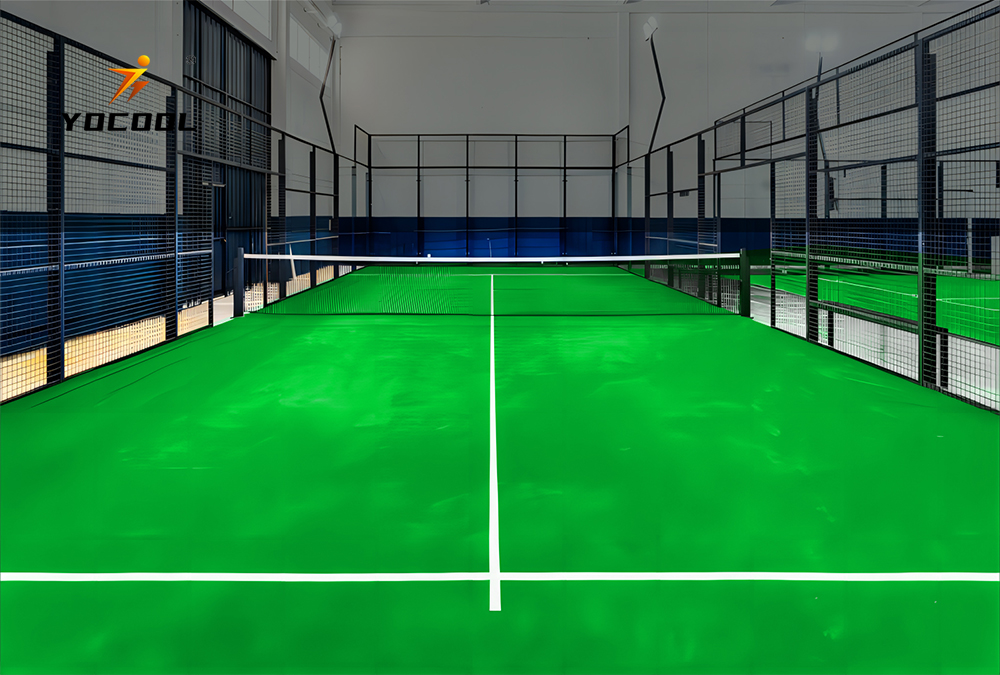

Understanding Padel Tennis Court Costs A Comprehensive Guide for Manufacturers
Padel tennis, a rapidly growing sport that combines elements of tennis and squash, has been gaining popularity worldwide. Its unique characteristics, such as being played on a smaller court enclosed by glass walls, have intrigued both recreational players and serious athletes alike. As interest in the sport escalates, so too does the demand for high-quality padel tennis courts. For manufacturers, understanding the intricacies of constructing a padel court and the associated costs is crucial to meeting market demands effectively.
Breakdown of Padel Tennis Court Costs
The cost of building a padel tennis court can vary significantly depending on several factors, including location, materials, labor, and design elements. Here’s a detailed breakdown of the primary components that influence the overall cost.
1. Land Preparation and Location The first step in constructing a padel court is land preparation. This includes leveling the site, removing any debris, and ensuring the ground is suitable for the construction of the court. Depending on the location, acquiring land may also contribute significantly to the overall cost. Urban areas typically demand higher prices than rural locations, and associated permits can also add to the expenses.
2. Court Dimensions and Construction Materials A standard padel court measures 20m x 10m, but there are variations available for different play styles and audiences. The choice of construction materials heavily influences costs. Courts can be made of various materials for the flooring (such as artificial grass, concrete, or rubber), and the walls can be constructed from tempered glass or modular systems. While tempered glass offers a premium look and feel, it can be more expensive than other materials.
3. Lighting and Additional Features Proper lighting is essential for padel courts, especially for evening play. Installing high-quality LED lights can enhance visibility and improve the playing experience, but they also represent an additional cost. Furthermore, designing features like changing rooms, seating areas for spectators, and landscaping can also add to the overall financial outlay.
4. Labor Costs Labor expenses can vary by region and the complexity of the project. Specialized contractors familiar with construction standards for sports facilities may charge more than general contractors. It’s essential for manufacturers to factor in labor costs accurately when planning a budget for a padel court installation.
5. Maintenance Expenses Ongoing maintenance is an important consideration when calculating the longevity and total cost of ownership of a padel court. Regular upkeep, such as cleaning the court surface, checking for damages, and maintaining the structural integrity of walls and fencing, can lead to additional costs. Manufacturers may also consider offering maintenance services as part of their business model to enhance customer satisfaction.

Pricing Strategies for Manufacturers
With an understanding of the costs involved in constructing a padel court, manufacturers must develop pricing strategies that reflect quality while remaining competitive. Here are a few tactics that can help
1. Offering Packages Manufacturers can create bundled offerings that include all necessary components—construction materials, lighting, and labor. This makes it easier for customers to choose a complete solution.
2. Quality vs. Cost While it’s tempting to cut costs to attract clients, compromising on the quality of materials or workmanship can lead to customer dissatisfaction and harm a manufacturer’s reputation. Offering various tiers of products can help cater to different budgets while maintaining quality standards.
3. Customization Options Providing customization options can allow customers to tailor their courts to specific needs, potentially increasing the perceived value and justifying higher prices.
4. Financing Solutions Padel court construction can represent a significant investment. Offering financing solutions can be an appealing option for clients, making it easier for them to afford the upfront costs.
Conclusion
As the popularity of padel tennis continues to rise, the demand for well-constructed courts will follow suit. For manufacturers, understanding the factors that affect padel tennis court costs is integral to positioning themselves competitively in the market. By focusing on quality, offering comprehensive solutions, and understanding their customer base, manufacturers can play a pivotal role in the growth of this exciting sport. Whether through innovative design, cost-effective materials, or customer-centric service, the future for padel court manufacturers looks promising.
High-Performance Industrial Flooring Solutions China Paddle Tennis Court for Sale
High-Performance Industrial Flooring Solutions Durable & Cost-Effective
Homogeneous Transparent Floor – Durable & Stylish Rubber Floor Solutions
Premium Homogeneous Transparent Floor for Durable & Stylish Spaces Rubber Floor Solutions
Premium Sports Floor Solutions Durable PVC Sports Floor & Rubber Floor for Gyms
Durable Rubber Composite Floor Premium Rubber Floor & Mats Solutions